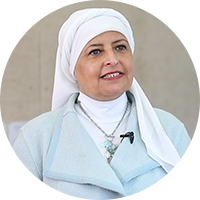-
Membership
Membership
Anyone with an interest in the history of the built environment is welcome to join the Society of Architectural Historians -
Conferences
Conferences
SAH Annual International Conferences bring members together for scholarly exchange and networking -
Publications
Publications
Through print and digital publications, SAH documents the history of the built environment and disseminates scholarship -
Programs
Programs
SAH promotes meaningful engagement with the history of the built environment through its programs -
Jobs & Opportunities
Jobs & Opportunities
SAH provides resources, fellowships, and grants to help further your career and professional life -
Support
Support
We invite you to support the educational mission of SAH by making a gift, becoming a member, or volunteering -
About
About
SAH promotes the study, interpretation, and conservation of the built environment worldwide for the benefit of all
What do we really mean when we say, “the Mediterranean?” This is not a rhetorical question, but a deeply political one, concerning the present and the past on the one hand, and architectural practice and history on the other. For instance, when we say Mediterranean unity, we may have in mind the former French President Nicolas Sarkozy’s failed top-down the Union for the Mediterranean project (2008); or the actualized grassroots unification of the region through uprisings and occupations that began with the Arab Spring (2011–2013). Likewise, when we think about contemporary Mediterranean architecture, we may well be thinking about projects such as Bernard Tschumi’s Acropolis Museum and Renzo Piano’s Stavros Niarchos Foundation Cultural Centre, each forming an imaginative dialogue with the topography and architectural heritage of Athens; or about the social housing projects on the shores of the Mediterranean. Many of those could not help but abandon creativity for the sake of immediate practical concerns, or their architects imagined a “localized” form of modernism following post(colonial) political agendas. Finally, when we discuss cross-culturality in the architectural and urban history of the Mediterranean, we may be simply focusing on monuments with visibly shared tectonic or formal elements; or we may also have in our purview the vernacular and the ephemeral—sites of different kinds of shared histories that have rarely left visible residues.
This panel explores practices of writing history and making architecture along these and similar spectrums. In order to investigate the Mediterranean and its strong global connectivities throughout history, it focuses just as much on failures and shortcomings as on successes and breakthroughs. Hence, it is intended to provide a critical perspective on a region whose name has become synonymous with multiculturalism. The panel features four short presentations by four panelists specialized on diverse aspects of Mediterranean architecture, culture, and identity. Together we will inquire into the ways in which architectural and urban historians, design students, and practitioners across the Mediterranean and/or of the Mediterranean could increase their efforts to learn from each other and dwell on the local knowledges produced in various cities. The session concludes with a Q/A session and discussion.
Co-chairs and Moderators:
Kıvanç Kılınç, IYTE
Saygin Salgirli, UBC
Panelists:
Howayda Al-Harithy, AUB
Sheila Crane, University of Virginia
Ziad Jamaleddine, L.E.FT Architects, Columbia GSAPP
Abbey Stockstill, Meadows School of the Arts
Speakers

Kıvanç Kılınç is associate professor of architectural history at Izmir Institute of Technology. He received his PhD (2010) at Binghamton University, SUNY. His research focuses on the history of social housing in Turkey and the Middle East, particularly as a tool to address informal urban development, as well as the transcultural exchanges, which shaped contemporary housing practices in the region. Kılınç is the co-editor of Social Housing in the Middle East: Architecture, Urban Development, and Transnational Modernity (Indiana University Press, 2019).

Saygin Salgirli is associate professor of art history at the University of British Columbia. His research focuses on late medieval and early modern Ottoman art and architecture, with a particular emphasis on interactions and connectivities with the Mediterranean world. He is the author of The Fluctuating Sea: Architecture and Movement in the Medieval Mediterranean (Routledge, 2021), and the editor of Inside/Outside Islamic Art & Architecture: A Cartography of Boundaries in and of the Field (Bloomsbury, 2021).

Howayda Al-Harithy is professor of architecture and urban design at the American University of Beirut (AUB) and founding director of the School of Design. She holds a PhD from Harvard University. Her research focuses on urban heritage with emphasis on the theoretical debate on heritage construction and consumption related to identity building and post-war reconstruction in the Arab world. She is the editor of and contributor to Lessons in Post-War Reconstruction: Case Studies from Lebanon in the Aftermath of the 2006 War (Routledge, 2010) and Urban Recovery: Intersecting Displacement with Reconstruction (Routledge 2021).

Sheila Crane is chair and associate professor of architectural history at the University of Virginia. She is the author of Mediterranean Crossroads: Marseille and Modern Architecture (University of Minnesota Press, 2011), which received the 2013 Spiro Kostof Book Award. Her long-standing fascination with cities across the Mediterranean informs the book she is currently completing, tentatively entitled, The City in the Shadow of the Shantytown: Reassembling the Urban from the Maghreb.

Ziad Jamaleddine is an assistant professor at the Columbia University Graduate School of Architecture, Planning and Preservation and co-founder of L.E.FT Architects (New York/Beirut). Jamaleddine is a practitioner and scholar with a research focus on Islamic architecture. His writings have been published in several journals including the Journal of Material Cultures in the Muslim World (Brill) (forthcoming, 2022). Among the built projects by L.E.FT is the award-winning Moukhtara Mosque.

Abbey Stockstill is an assistant professor of Islamic art and architecture at Southern Methodist University. She received her Ph.D. from Harvard University in 2018, where she wrote her dissertation on Marrakesh in the era of ʿAbd al-Muʾmin. This has formed the basis of her first single-authored monograph, Marrakesh and the Mountains: Landscape, Urban Planning, and Identity in the Medieval Maghrib, forthcoming with Pennsylvania State University Press.


